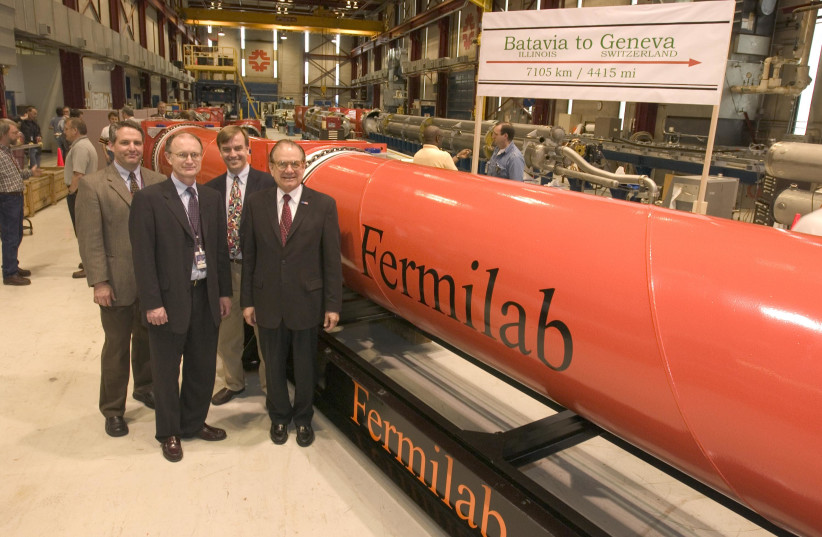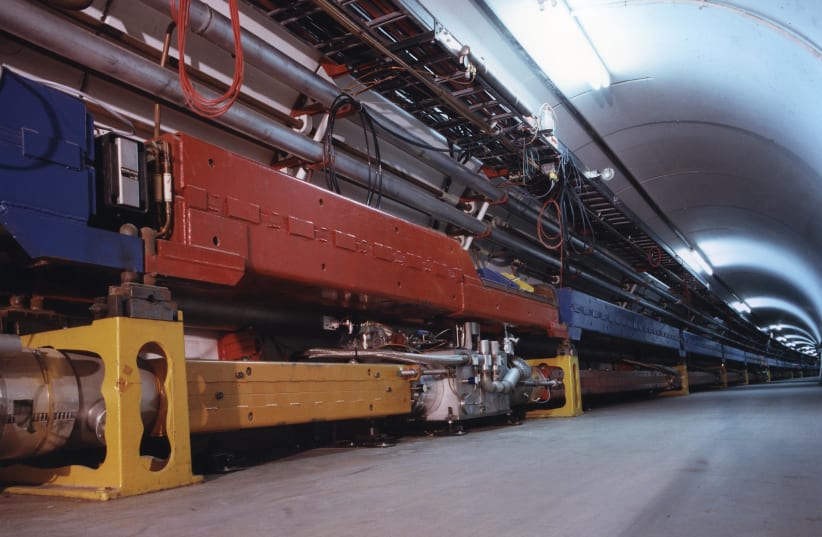Physicists are concerned after a new precise measurement of an elementary particle found that it seems to be about 0.1% heavier than it was predicted to be, shaking the model we currently use to understand the laws of physics.
Who are you, W Boson?
The particle, called a W boson, is a fundamental particle which is responsible for the weak force, a fundamental force that can change the make up of particles and is responsible for the processes that fuel the sun and cause particles to decay.
Research published by the Collider Detector at Fermilab (CDF) collaboration in the journal Science earlier this month presented the most precise measurement of the mass of the W boson to date, analyzing 10 years of data, but there's a problem: The measurement doesn't match up with the measurement predicted by the Standard Model of particle physics, the current central theory of how particle physics works.
The Standard Model and the new measurement
The Standard Model is a highly precise system used to understand physics and each part of that system interacts. If even one predicted measurement is slightly off from the real measurement, it could set the entire model off balance. So if the mass of the W boson is significantly heavier than the mass predicted by the Standard Model, then physicists will need to figure out what's causing that discrepancy and what that means for the rest of the model.
While the W boson is predicted by the Standard Model to weigh 80,357 million electron volts (MeV), the scientists at Fermilab found it to be 80,433 MeV, which would be 76 MeV or about 0.1% heavier than the prediction, or a discrepancy seven times larger than the margin of error, also known as seven-sigma. The result is accurate to about 9 MeV.


The gold standard usually used by physicists to determine a definitive discovery is five-sigma, but in this case other experiments have found lower measurements of the mass of the W boson meaning that more independent verification needs to be done before this can be considered definitive.
An "enormous" number of improvements
“The number of improvements and extra checking that went into our result is enormous,” said Ashutosh V. Kotwal of Duke University, the leader of the analysis of the measurement and one of the 400 scientists in the CDF collaboration, in a press release. “We took into account our improved understanding of our particle detector as well as advances in the theoretical and experimental understanding of the W boson’s interactions with other particles. When we finally unveiled the result, we found that it differed from the Standard Model prediction.”
Other measurements conducted of the W boson have recorded a discrepancy between the measured weight and the weight expected by the Standard Model as well, but some of those measurements have been a lot closer to the Standard Model. A measurement by the ATLAS experiment at the Large Hadron Collider at CERN found in 2017 that the mass of the W boson was only a hair heavier than the Standard Model's prediction, meaning that seemingly either ATLAS's experiment was off or Fermilab's is.
What are the implications for phyics?
According to the CDF, the measurement may mean that improvements or extensions of the Standard Model may be required. This would be one of the first major adjustments to the Standard Model in years and has physicists excited.
“This would be a complete change in how we see the world,” Sven Heinemeyer, a physicist at the Institute for Theoretical Physics in Madrid, told Quanta Magazine. "The Higgs fit well into the previously known picture. This one would be a completely new area to be entered.”
Fermilab Director Joe Lykken stressed that while this is an "intriguing result," the measurement still needs to be confirmed by another experiment before it can be interpreted fully.
“It’s now up to the theoretical physics community and other experiments to follow up on this and shed light on this mystery,” said CDF co-spokesperson David Toback of Texas A&M University. “If the difference between the experimental and expected value is due to some kind of new particle or subatomic interaction, which is one of the possibilities, there’s a good chance it’s something that could be discovered in future experiments.”
